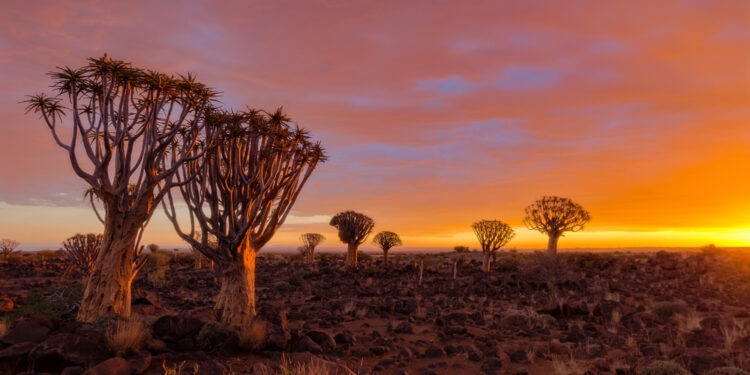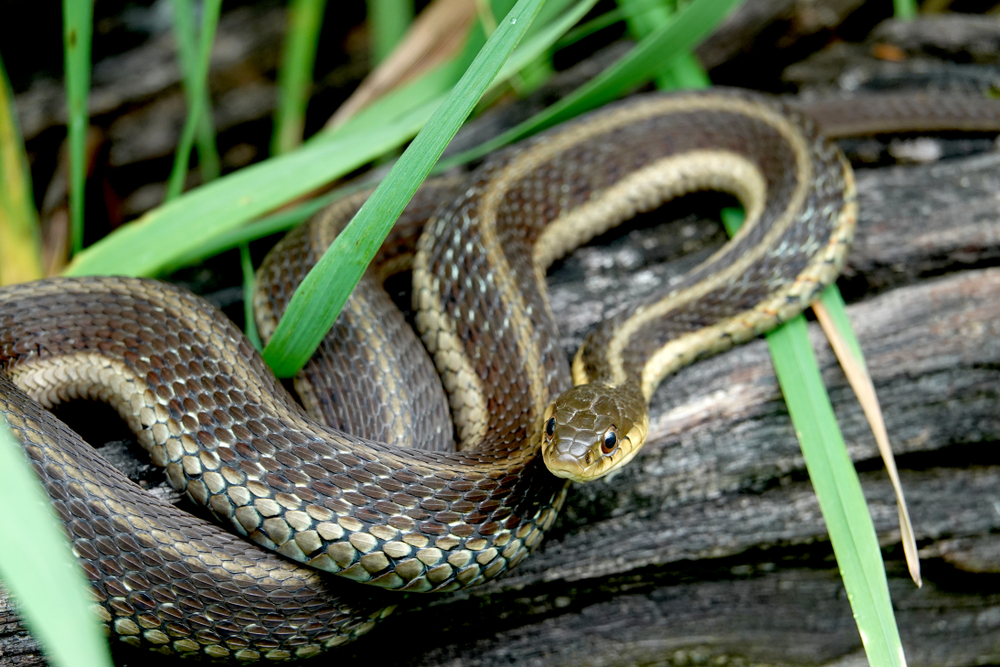Sculpted by time and arid winds, the Quiver Tree Forest of Namibia stands as a testament to the resilience of life against the harsh realities of the desert. This forest, a unique assembly of Aloidendron dichotomum, more commonly known as quiver trees, presents a captivating picture of nature’s adaptability and the cultural significance of botanical life.
Tucked within the expansive southern Namibian landscape, the Quiver Tree Forest unfolds like an otherworldly panorama of distinctive flora. The primary resident of this botanical theatre is the quiver tree, a species that belongs to the Aloe family. The quiver tree, though called a tree, is indeed a gigantic aloe plant. The species’ dichotomous branching, where the branches repeatedly fork into two, gives the tree an iconic look that distinguishes it from the standard desert vegetation. These forked branches, often reaching skyward, seem to imitate a hand reaching out for the heavens, grasping for life in the rugged desert terrain.
Cloaked in a protective layer of cork-like bark, the quiver tree can withstand the scorching desert sun and frigid winter nights. This bark is not just practical but aesthetic too, lending a light, almost silvery hue to the tree, contrasting beautifully with the stark blue desert skies. As the sun dips into the horizon, the silhouettes of these trees against the sunset create a spectacle that is nothing short of magical.
But the quiver tree is not just a marvel of nature’s design; it is also a symbol of cultural significance for the indigenous San people of the region. Traditionally, the San people have used the hollowed branches of the quiver tree to create quivers for their arrows, thus the name. The soft, insulating nature of the tree’s bark provides a perfect material for crafting these vital tools, playing a crucial role in the San’s daily life and survival.
The San people’s relationship with the quiver tree goes beyond the utilitarian. These trees hold a sacred place in their culture and spirituality. They are often considered symbols of wisdom and longevity, standing tall for hundreds of years, witnessing the cycles of life and time. Some of the oldest quiver trees in the forest are estimated to be over 300 years old, weathering the test of time like the enduring culture of the San people.
The Quiver Tree Forest is also an ecological hotspot, hosting a unique mix of desert-adapted wildlife. The trees’ bright yellow flowers, blooming in the winter months, provide a rich nectar source for a variety of bird species, including the vibrant sunbird and the white-eye. Not to be missed is the sociable weaver, which constructs its colossal communal nests in the forked branches of the quiver trees, a sight unique to this region.
The quiver tree’s adaptations extend below the ground as well. The tree is equipped with a deep taproot system that allows it to access water sources far beneath the arid soil. This root system, combined with its succulent leaves that store water, enables the quiver tree to thrive in an environment where other plant species would struggle.
Unfortunately, the quiver tree is under threat. Climate change and global warming have led to a noticeable decline in the quiver tree population. Rising temperatures are believed to be affecting the tree’s growth and reproduction, leading to a worrying decrease in their numbers.
Despite the threats, the Quiver Tree Forest remains one of Namibia’s most iconic natural landscapes, attracting visitors from around the world who come to admire its unique beauty and resilience. Every photograph captured, every awe-inspired tourist, every scientist studying these trees contributes to the collective awareness and understanding of this fascinating ecosystem. This attention is vital for conservation efforts aimed at preserving and protecting the Quiver Tree Forest for future generations.
The Quiver Tree Forest stands as a silent yet eloquent narration of the intricate relationship between the natural world and human culture. Amidst the harshness of the Namibian desert, these trees, and the people who have used and revered them, remind us of the delicate balance of life and the importance of every species in the rich tapestry of our planet’s biodiversity. The Quiver Tree Forest is not just a physical location; it is a living, breathing testament to the resilience of life, the adaptability of nature, and the depth of human connection to the environment.
In conclusion, the Quiver Tree Forest is a masterpiece of nature and culture entwined, a symbol of resilience, and a beacon of biological and cultural significance. As we move into an uncertain future marked by climate change and habitat loss, places like the Quiver Tree Forest remind us of what we stand to lose and, importantly, what we must fight to preserve.







